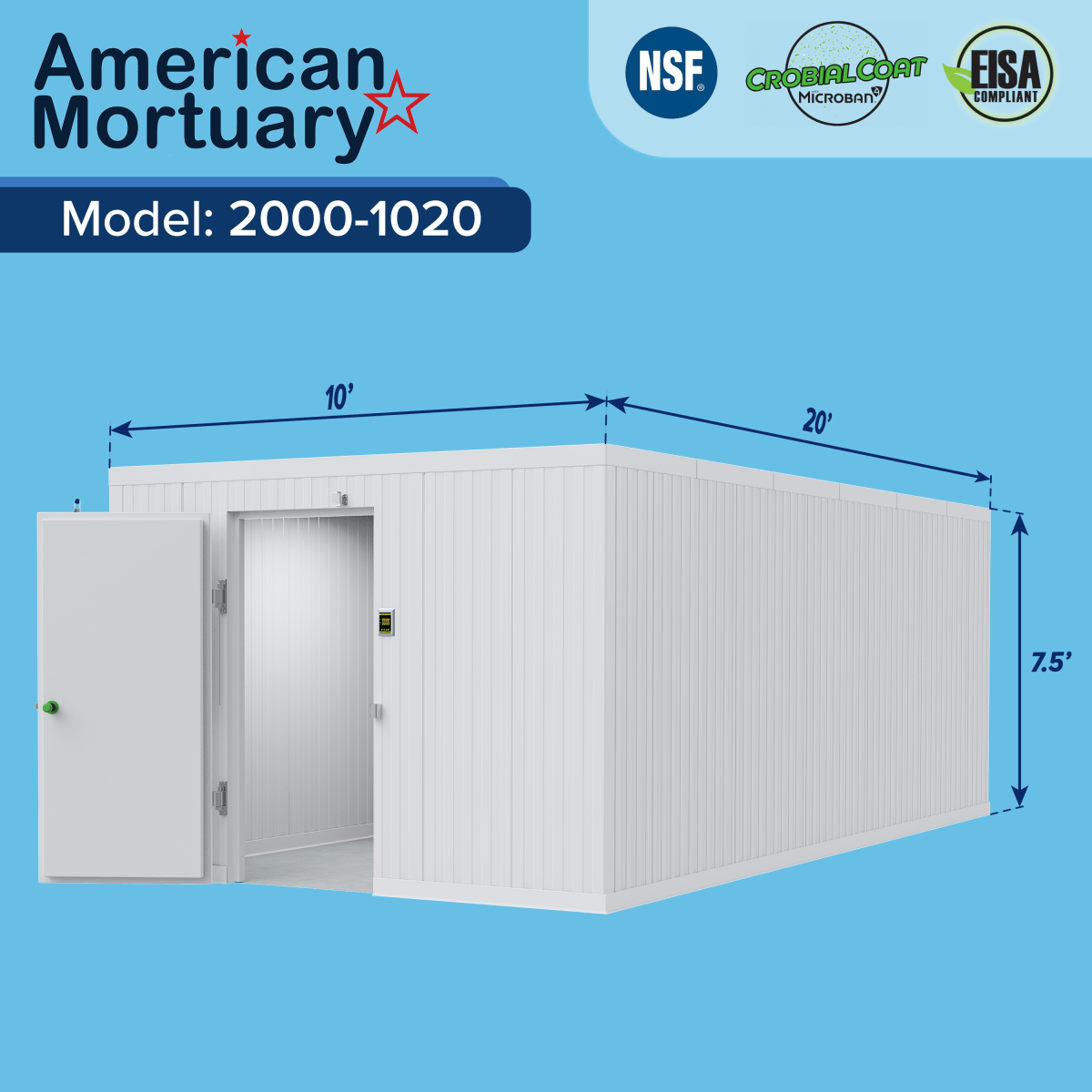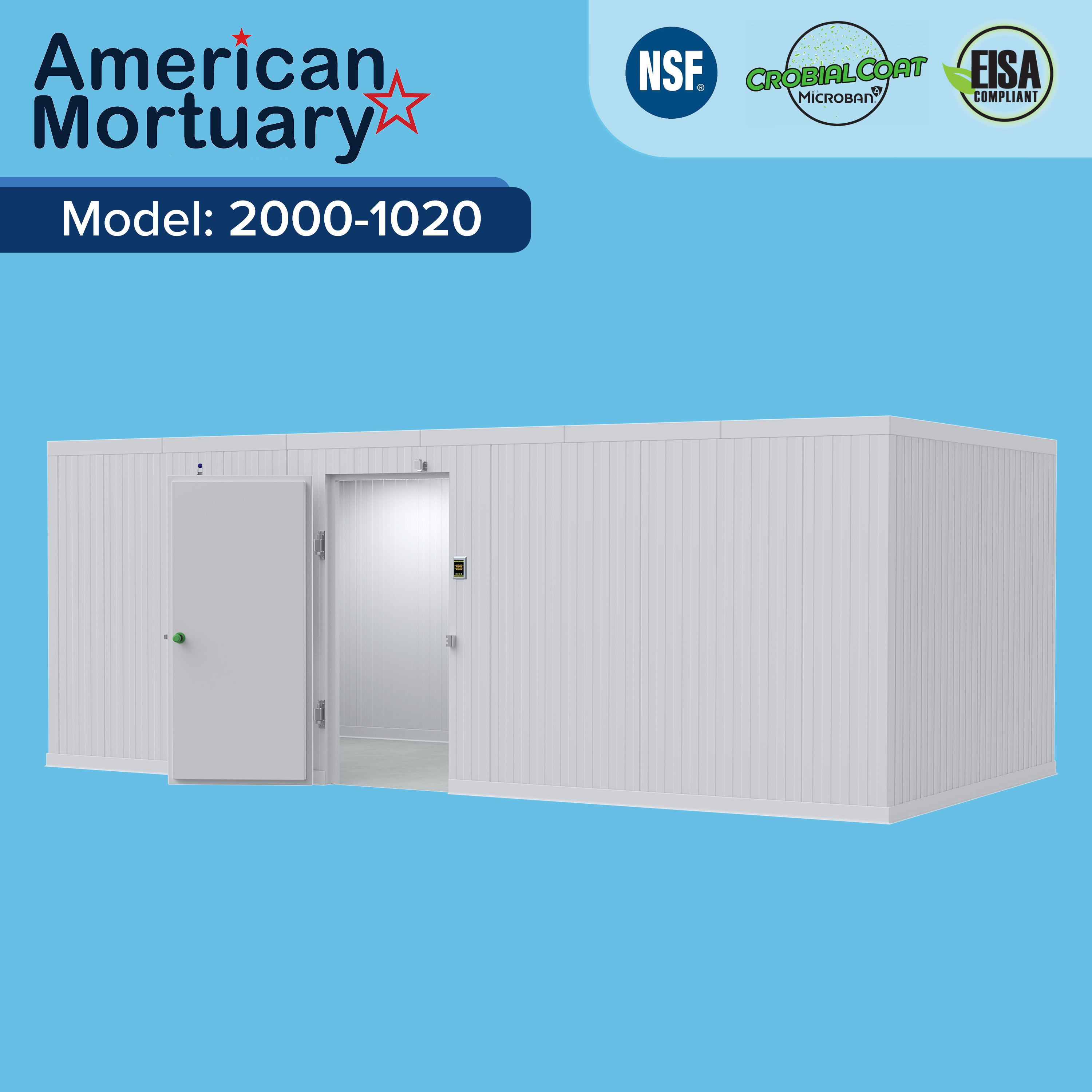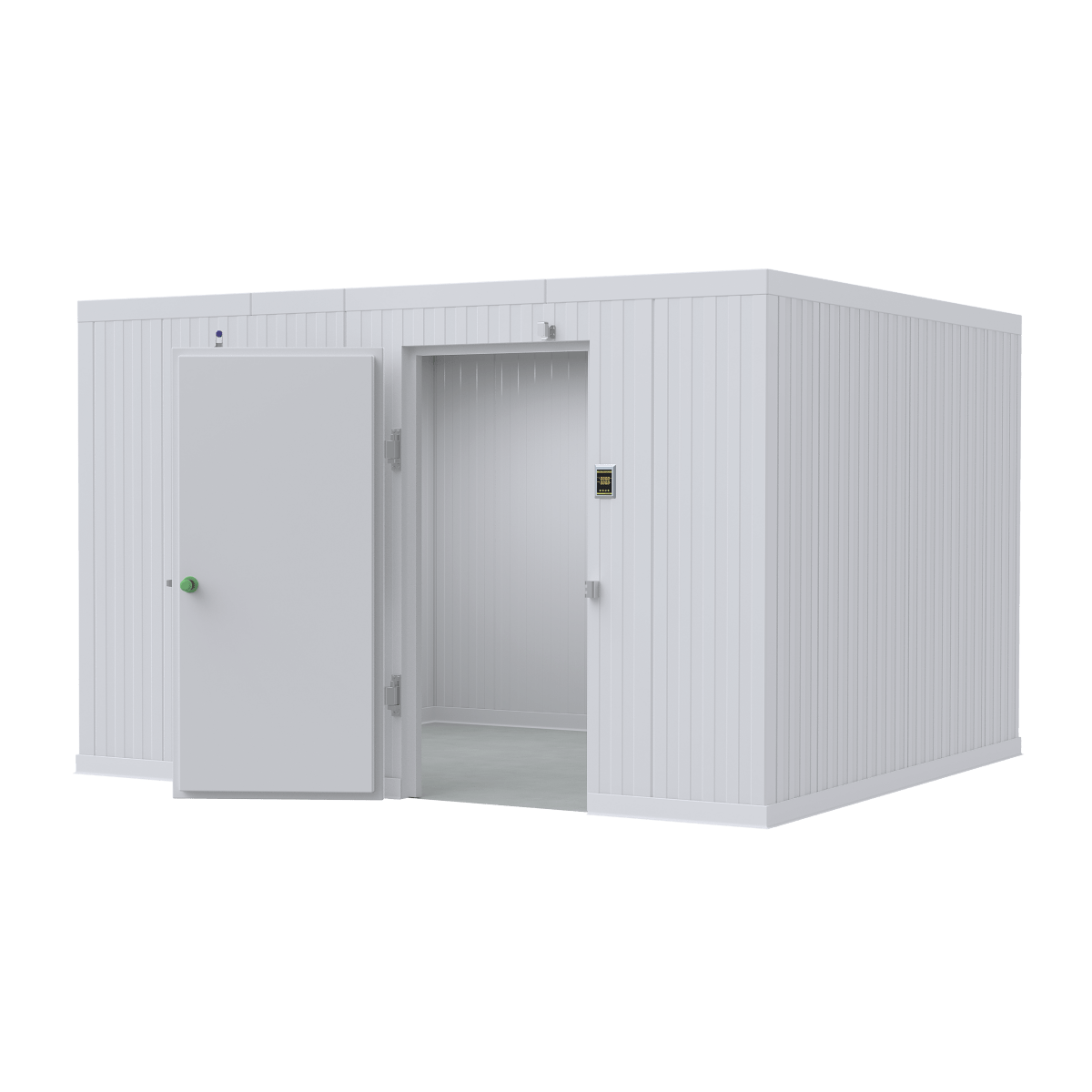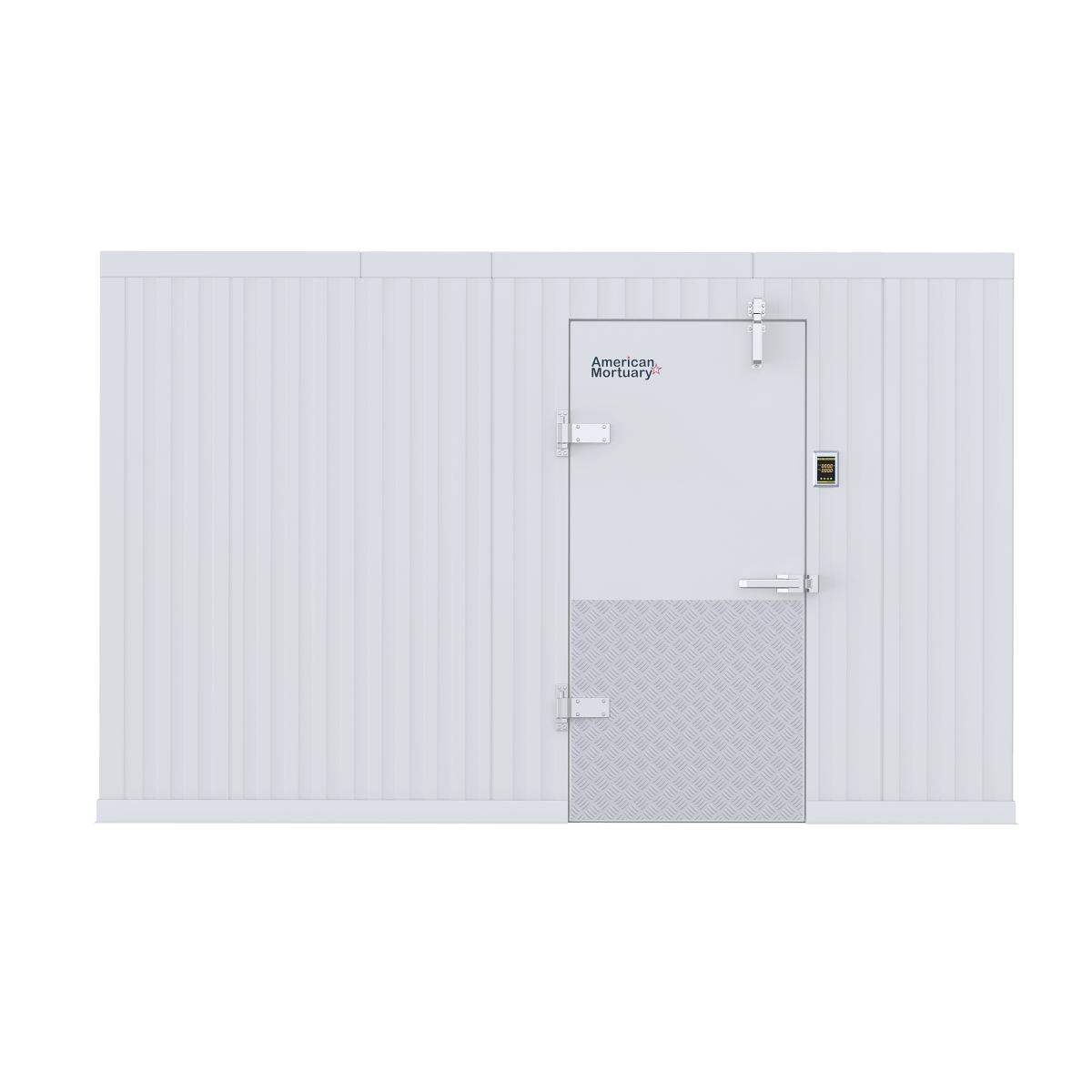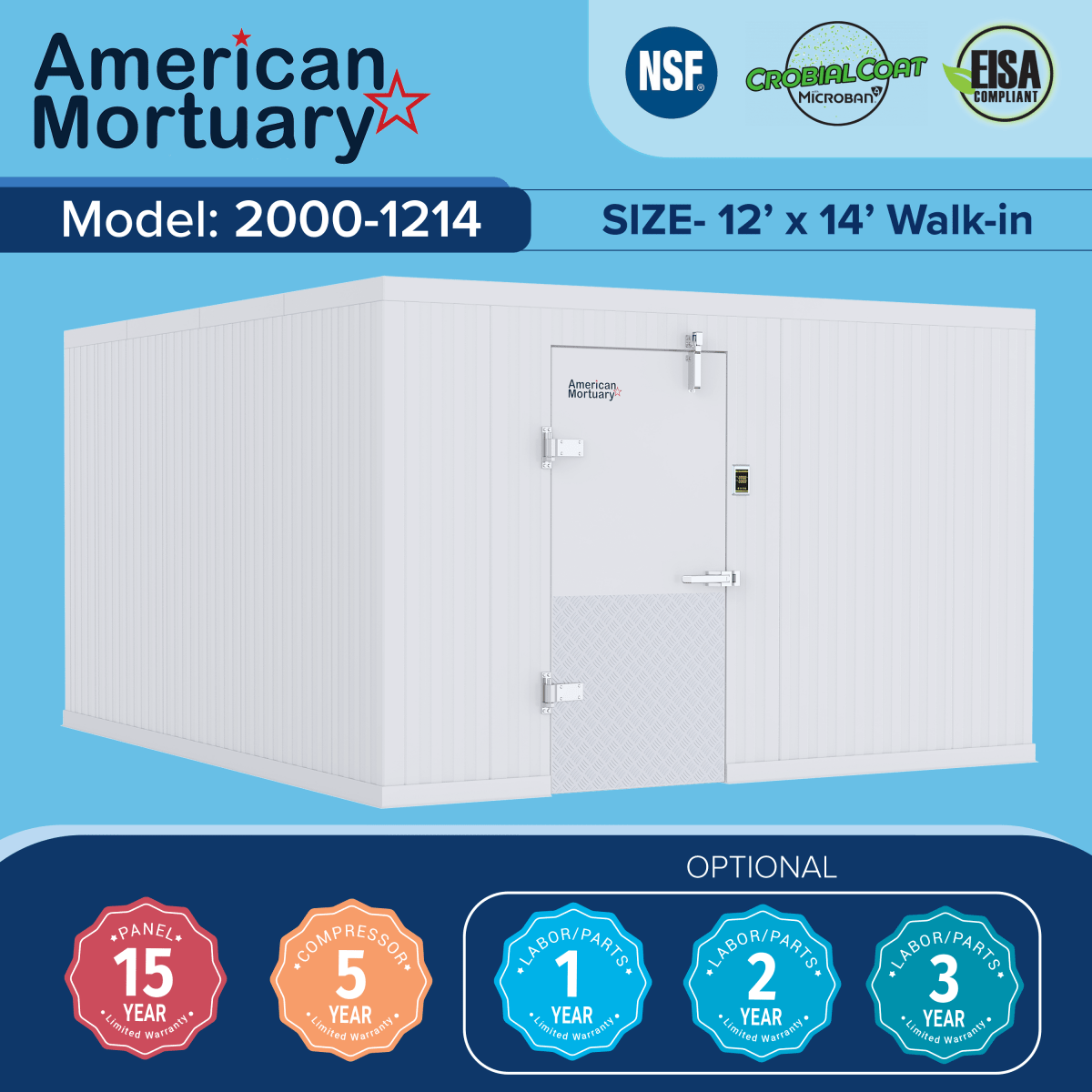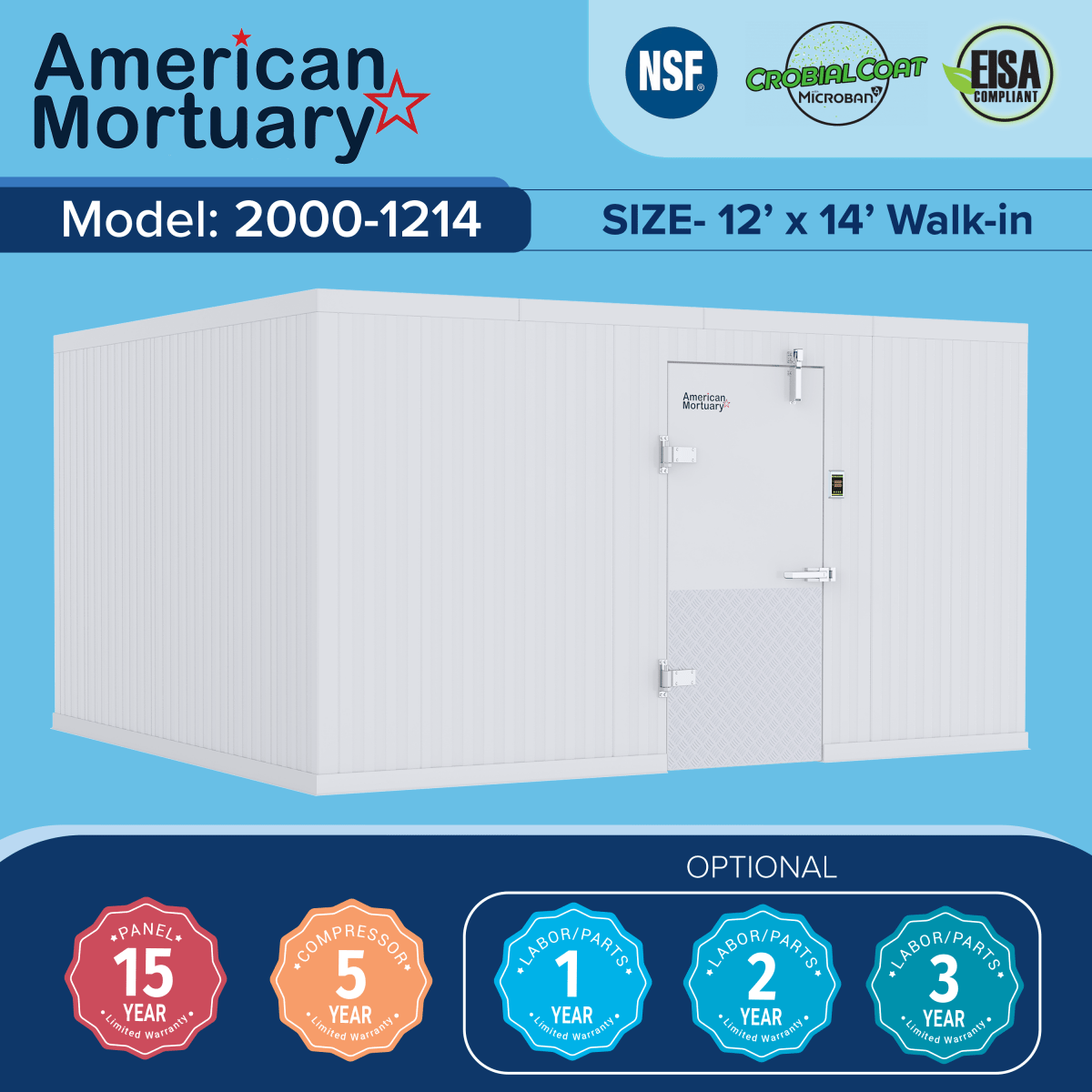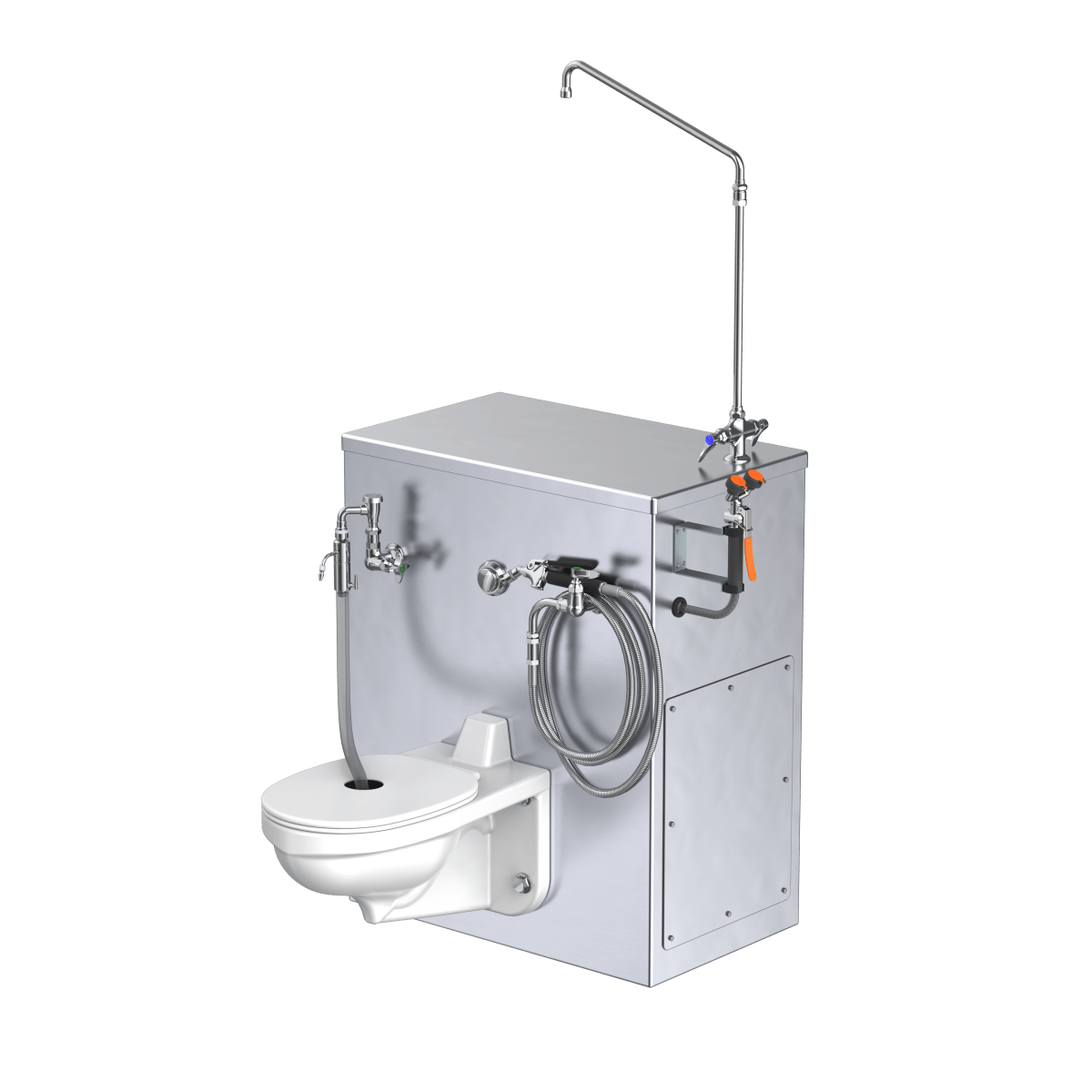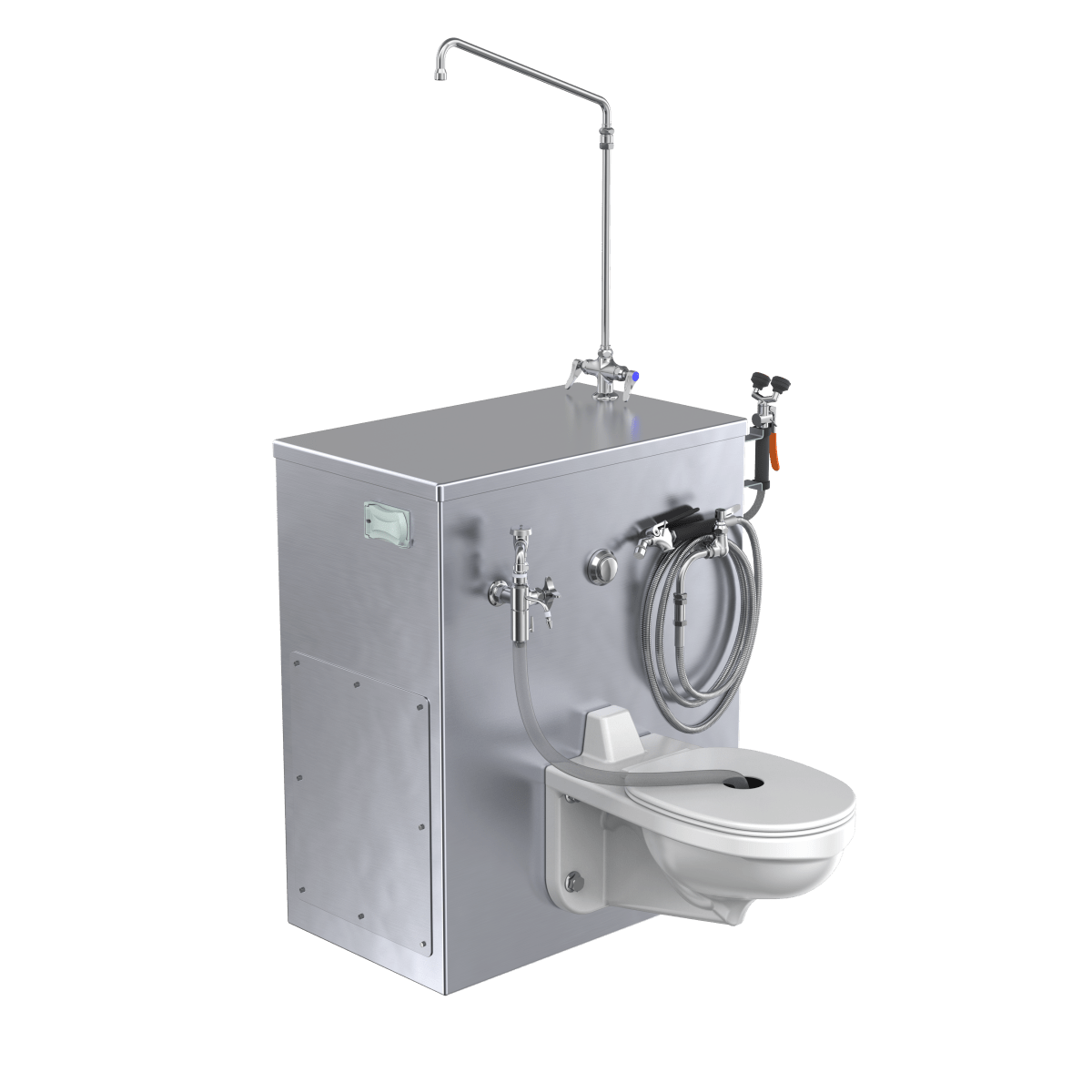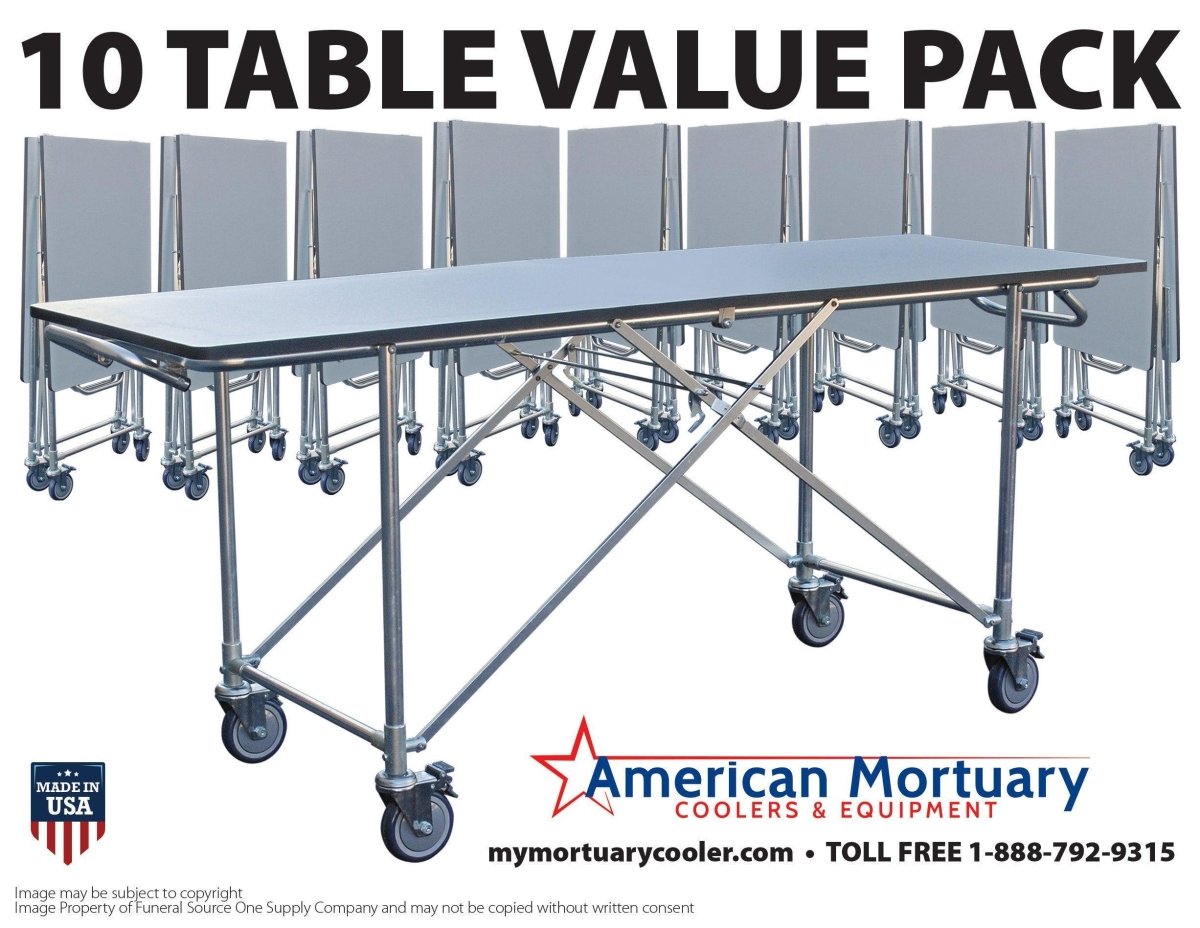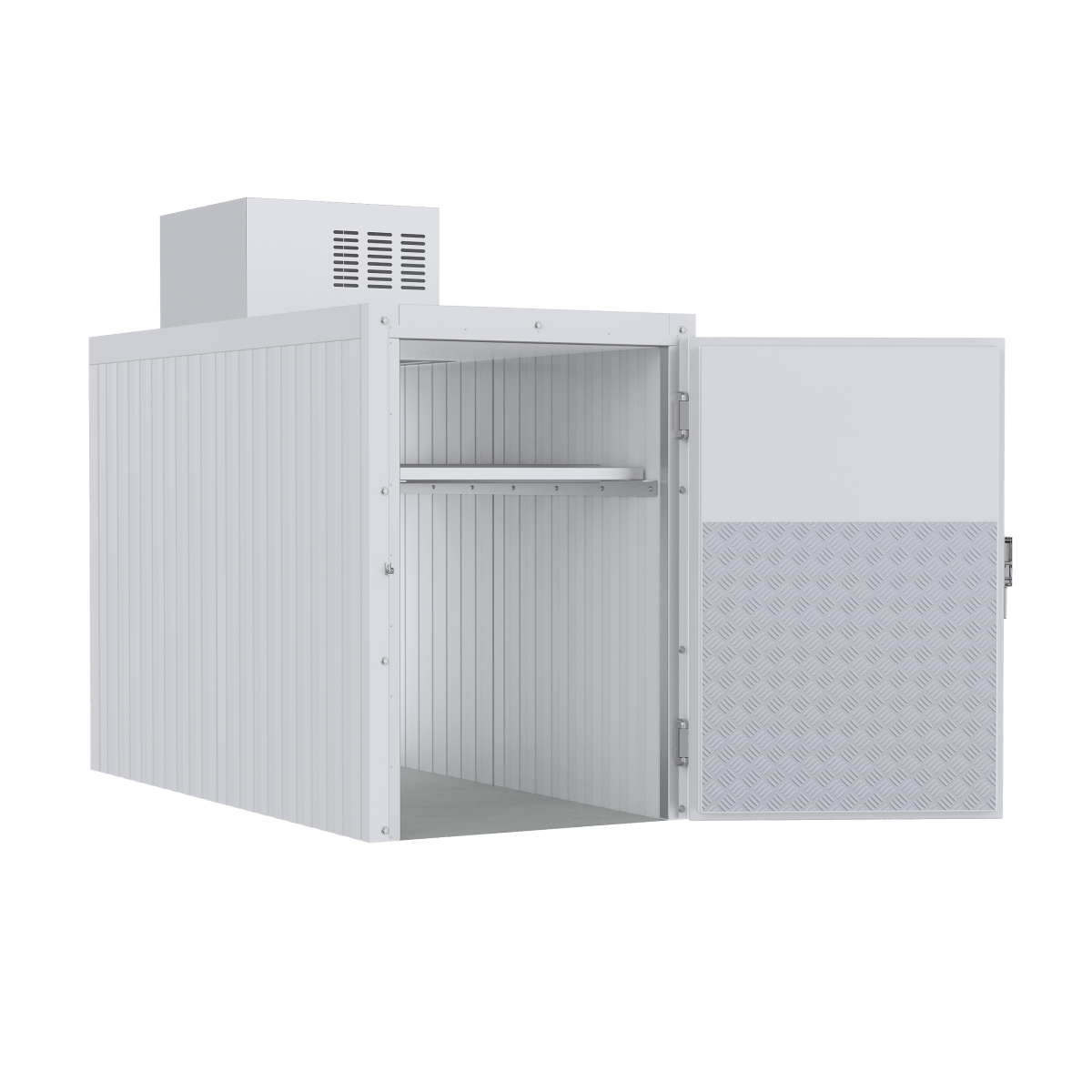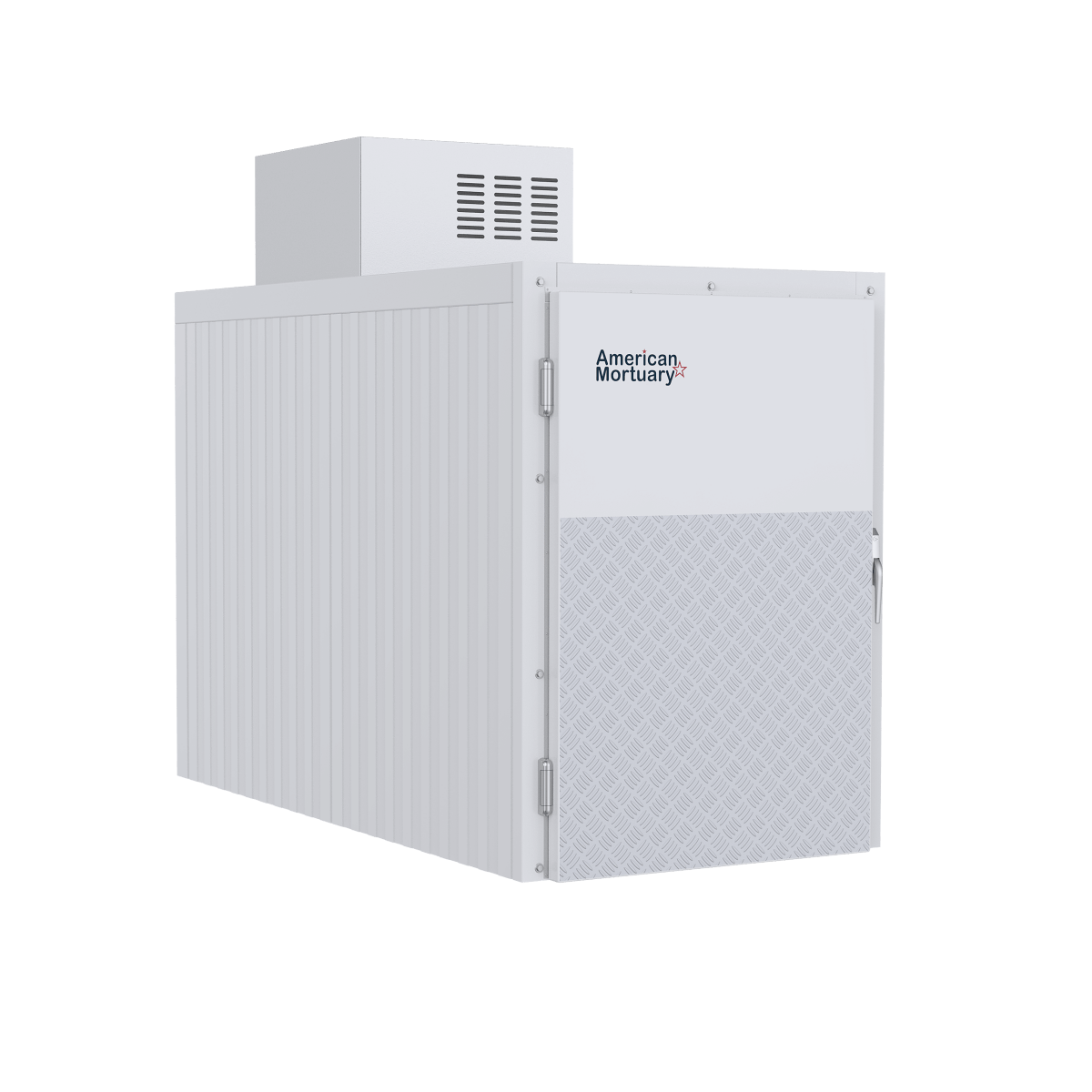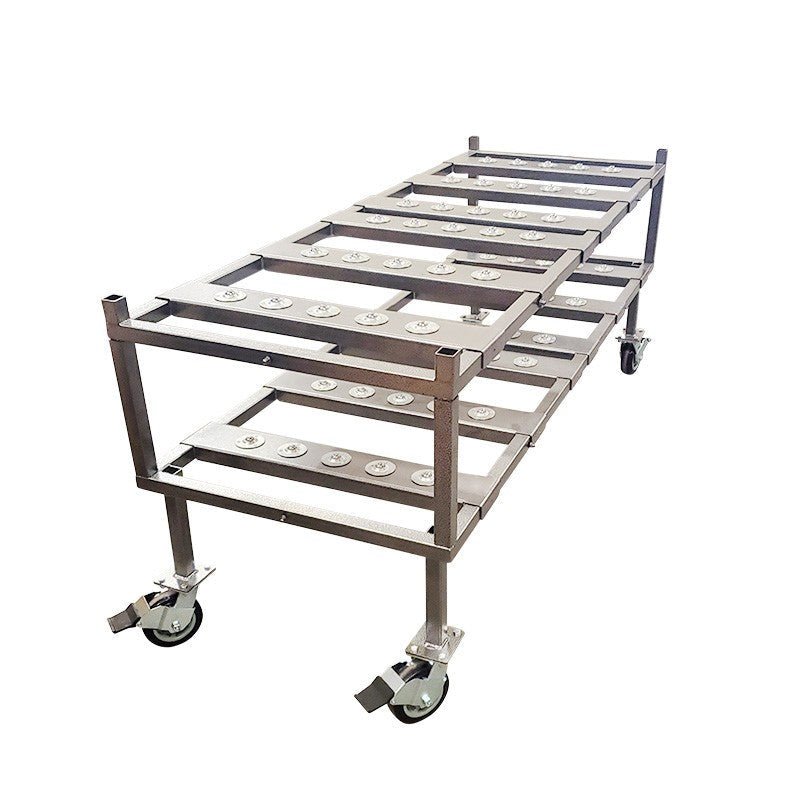Responding to Mass Fatality Events: Understanding Portable Morgue Solutions
A portable morgue is a temporary, mobile facility designed for the storage and processing of human remains during mass fatality incidents or when existing mortuary infrastructure is overwhelmed. These units are crucial for emergency management and disaster response teams.
Key Portable Morgue Facts:
- Deployable within hours (some inflatable models in 20 minutes)
- Temperature maintenance between 35°F-39°F even in extreme conditions
- Capacity ranges from 8 to 90 remains depending on model
- Available as refrigerated trailers, inflatable domes, or modular systems
- Designed for dignified treatment of decedents
Recent global events, including the COVID-19 pandemic, natural disasters, and mass casualty incidents, have highlighted the critical importance of these systems. When existing mortuary facilities reach capacity, portable morgues provide the necessary infrastructure to ensure proper care for the deceased.
"The Mortuary Dome plays a key part in our Regional Mass Fatality plans... We are able to deploy a large mortuary operation when required in a very short period of time," notes Cahir O'Byrne, Emergency Management Officer.
For funeral directors and emergency planners, understanding the available options is essential for preparedness. These systems range from simple refrigerated trailers to sophisticated units with integrated autopsy stations, cooling systems, and expandable capacity.
The primary consideration when selecting a portable morgue is balancing immediate deployment needs with dignified care for the deceased and the practical requirements of those managing the incident.
What is a Portable Morgue?
When disaster strikes or communities face overwhelming fatality events, a portable morgue becomes an essential resource. Simply put, a portable morgue is a mobile facility that brings necessary mortuary services directly to where they're needed most. Unlike permanent facilities, these units can be quickly transported to disaster zones, pandemic hotspots, or any location where the number of deceased has overwhelmed local resources.
Here at American Mortuary Coolers, we've seen how these systems serve as the backbone of effective mass fatality response plans. They provide not just storage, but a dignified temporary resting place for loved ones during extraordinary circumstances.
The primary purpose of a portable morgue is straightforward yet vital – to preserve human remains in a carefully controlled environment until proper identification can occur and families can receive their loved ones. Our units maintain optimal preservation temperatures between 35°F and 39°F regardless of what's happening outside, ensuring every individual is treated with the care and respect they deserve.
Today's portable morgue options range from basic refrigerated storage units to comprehensive facilities with dedicated autopsy stations, administrative areas, and specialized forensic equipment. Despite their differences, all share two essential qualities: mobility and self-sufficiency in challenging environments.
More info about changing your mortuary cooler into an arctic preservation chamber
How Portable Morgues Function
The heart of any portable morgue consists of three critical systems working together to fulfill its mission:
First, the cooling system provides the foundation of preservation. Traditional units use modified commercial refrigeration technology, while advanced options incorporate the Mortuary Improved Remains Cooling (MERC) System. This innovative approach uses direct contact liquid cooling, dramatically improving efficiency while reducing energy consumption – a crucial advantage when operating with limited power in disaster areas.
Second, thoughtful storage capacity solutions ensure both space efficiency and respectful handling. Modern portable morgues feature durable stainless steel racking systems designed specifically for this sensitive purpose. The most effective designs include sliding trays for easy access, bariatric options for larger individuals, integrated identification systems, and sealed compartments for cases involving infectious disease.
Finally, rapid deployment capabilities define what makes a portable morgue truly portable. Today's engineering marvels include collapsible frameworks, pre-assembled units requiring minimal setup, and inflatable structures that can be operational in as little as 20 minutes. Some remarkable units, like the Mobile Mortuary Dome, can be inflated and accepting remains within half an hour – precious time saved during critical emergency response.
The electrical systems in these units showcase practical versatility, with many designed to operate on standard power, generators, or alternative energy sources. This flexibility ensures they remain functional even when local infrastructure has been severely compromised.
At American Mortuary Coolers, we understand that behind every technical specification lies a human story. Our portable morgue solutions are designed not just to meet technical requirements, but to serve communities with compassion during their most challenging moments.
Types of Portable Morgue Units
When it comes to portable morgue solutions, there's no one-size-fits-all approach. The industry has evolved significantly over the years, developing several distinct options to meet different emergency scenarios, budget considerations, and operational needs.

Refrigerated Trailers
The workhorse of the portable morgue world has to be the refrigerated trailer. These units take familiar commercial refrigeration technology and adapt it specifically for dignified human remains storage.
What makes refrigerated trailers so popular? For starters, they offer impressive capacity. Smaller and mid-sized trailers can typically hold between 16-48 remains, while the larger 53-foot models can accommodate up to 90 deceased individuals. That's significant capacity that can be driven directly to where it's needed most.
Temperature control is another strong point. These units maintain a steady 35°F interior environment even when outside temperatures soar to 110°F – critical for preservation in hot disaster zones. Most models feature thoughtful accessibility design with low-entry floors and sturdy ramp systems about 48 inches wide that can handle up to 1,500 pounds, making the difficult task of loading and unloading remains a bit easier on staff.
Inside, you'll find seamless, sealed interiors that can be thoroughly decontaminated, motion-activated lighting to conserve energy, and heavy-duty commercial flooring built to withstand the demands of emergency response. These trailers typically come with a one-year comprehensive warranty and can serve communities for over 20 years with proper maintenance.
During the COVID-19 pandemic, these refrigerated trailers became a sadly familiar sight outside hospitals across the country. Their ability to arrive on-site within hours of a request helped maintain dignity for the deceased during an overwhelming crisis that strained traditional morgue capacity beyond its limits.
For the latest research on mass fatality management, see this resource.
Inflatable Mortuary Domes
When speed is of the essence, nothing beats the deployment time of inflatable mortuary domes. These innovative portable morgue structures represent modern emergency response at its finest.
The Mobile Mortuary Dome, one of the leaders in this category, can transform from a compact transport package to a fully functional morgue facility in just 20 minutes. That's not a typo – twenty minutes from arrival to operational status. This remarkable speed means responders can establish dignified care for the deceased almost immediately upon reaching a disaster zone.
A standard dome configuration covers about 7m x 6m and can accommodate up to 56 deceased individuals. But what makes these systems truly special is their expandability – the modular design allows for connecting multiple units, creating capacity for 200+ remains when faced with truly catastrophic events.
The cooling technology in these domes uses efficient captive air systems that maintain proper preservation temperatures while consuming less power than traditional refrigeration – a crucial advantage when working in areas with damaged infrastructure and limited electricity.
These units have proven their worth in real-world applications. Cahir O'Byrne, an Emergency Management Officer from Dublin, Ireland, shares: "The Mortuary Dome plays a key part in our Regional Mass Fatality plans... We are able to deploy a large mortuary operation when required in a very short period of time. The Mortuary Dome is simple to set up and easy to transport and undoubtedly improves our ability to respond to situations with potentially high numbers of fatalities."
The combination of rapid deployment, substantial capacity, and straightforward transport makes inflatable solutions particularly valuable for regions preparing for potential mass casualty events without extensive permanent infrastructure.
Rapid-Deploy Coolers and Modular Systems
For maximum flexibility and scalability, rapid-deploy coolers and modular portable morgue systems represent some of the most innovative solutions available today.
The Mortuary Improved Remains Cooling (MERC) System stands out in this category with its groundbreaking approach to preservation. Unlike traditional units that essentially place a room within a refrigerator, the MERC System uses direct contact liquid cooling technology. This fundamental difference eliminates bulky refrigeration equipment and creates a truly portable solution that can be transported in standard vehicles – no special trucks or trailers required.
Available in configurations supporting 8, 24, or 48 remains, the MERC System offers remarkable energy efficiency while maintaining perfect preservation temperatures. Its interoperability with existing facilities makes it ideal for hospitals or funeral homes needing to quickly expand capacity during surge events.
Another impressive innovation is the Portable Morgue Expansion Cube (PMEC). When not in use, this compact unit occupies just 38 square feet on its storage wheels – about the size of a large desk. Yet in approximately 30 minutes, without requiring any tools, it transforms into a dignified storage space for 12 decedents, including specialized positions for three bariatric individuals.
The PMEC operates on standard 120V/15A electrical service – the same as a typical household outlet – eliminating the need for special power arrangements. With its 10,000-pound capacity and rugged construction, it's built to perform reliably in the most demanding conditions.
At American Mortuary Coolers, we've seen growing interest in these modular systems from facilities across our service regions. As emergency preparedness becomes increasingly sophisticated, the ability to rapidly scale capacity without major construction provides crucial flexibility for communities planning for uncertain future events.
For facilities considering how to transform your mortuary cooler into an arctic preservation chamber, these modular systems offer compatible options that can improve existing capabilities while providing surge capacity when needed most.
Key Features and Benefits of Portable Morgues
When planning for emergency response, understanding what makes a portable morgue effective can help you make the right choice for your community's needs. These systems balance technical requirements with the deeply human aspects of caring for the deceased during challenging times.

Rapid Deployment
In crisis situations, time is precious. The true value of a portable morgue shines through in how quickly it can be up and running.
Today's leading systems can be operational within just a few hours of arrival on site. Some of our inflatable options at American Mortuary Coolers can be ready in as little as 20 minutes – about the same time it takes to brew coffee and brief your team.
Most units are designed with simplicity in mind, requiring just 2-4 people for setup. This is particularly important when resources are stretched thin during major incidents. The best systems feature tool-free assembly with straightforward instructions, meaning your team doesn't need specialized training to get things running. We've seen facilities successfully deploy these units with staff who had only reviewed the training videos the day before.
Scalability
No two emergencies are alike, which is why flexibility in your portable morgue solution is crucial.
Modern systems feature modular designs that grow with your needs. Think of it like building blocks – you can start with basic capacity and expand as the situation requires. Many of our units allow multiple coolers to be connected, creating a seamless expanded facility when needed.
Inside these units, configurable racking systems let you adjust the layout based on your specific requirements. This might mean creating specialized areas for different processes or simply maximizing capacity. The ability to deploy your system in phases also helps manage resources effectively – you can start with what you need immediately and scale up as the situation evolves.
Temperature Control
Maintaining proper conditions is the heart of what a portable morgue does. Without reliable temperature control, other features become meaningless.
The gold standard for preservation is maintaining temperatures between 35°F and 39°F (1.7°C-3.9°C). What sets premium systems apart is their ability to maintain these temperatures even in challenging environments. Our AirCool Extreme units, for instance, can maintain proper cooling even when outside temperatures soar to 104°F (40°C) – crucial for deployments in hot climates or summer months.
Behind the scenes, digital monitoring systems constantly check temperatures and alert staff to any fluctuations. The best units include redundant cooling components – essentially a backup system that kicks in if the primary system has issues. This might seem like overkill until you're in a situation where failure isn't an option.
Ensuring Dignity
Technical specifications matter, but at American Mortuary Coolers, we never forget the human element of our work. A portable morgue must incorporate features that preserve the dignity of those who have passed.
Individual storage compartments or trays allow for separation and privacy. Clear identification systems prevent mix-ups and ensure each person is properly tracked throughout the process. Many of our units feature designs that shield remains from public view during transfers – a small but meaningful consideration for families and responders alike.
We've also worked with diverse communities to ensure our systems can accommodate different cultural and religious practices. This flexibility allows for respectful handling regardless of tradition or belief system – something that brings comfort during difficult times.
Technological Advancements
Recent innovations have dramatically improved what portable morgue systems can do in the field.
Direct contact cooling technologies, like those in our MERC system, use liquid cooling for more efficient preservation with less energy consumption. This means smaller generators and less fuel needed – critical when resources are scarce.
Advanced composite materials have replaced older, heavier components, making units lighter without sacrificing durability. Smart monitoring systems now allow remote temperature checks via mobile apps, giving staff the ability to monitor conditions from anywhere.
Many of our newer systems incorporate sustainable design elements that reduce environmental impact while improving performance. Energy-efficient components mean lower operating costs and less strain on limited power resources during emergencies.
At American Mortuary Coolers, we believe the best emergency response solutions combine technical excellence with thoughtful, human-centered design. Our portable morgue systems are built not just to meet specifications, but to serve communities with dignity during their most challenging moments. After all, behind every technical requirement is a human need – and that's what truly drives our innovation.
Deployment Scenarios for Portable Morgues
When disaster strikes, having the right resources in the right place becomes crucial. Portable morgues serve as essential infrastructure in various challenging scenarios, providing dignified care for the deceased when normal systems are overwhelmed or unavailable.

Natural Disasters
Mother Nature's fury often creates situations where portable morgue facilities become essential. During hurricanes and flooding events, power outages can render existing facilities useless, while floodwaters may make buildings completely inaccessible. We saw this during Hurricane Katrina in 2005, when mobile solutions provided crucial support in areas where nothing else remained standing.
Earthquakes present their own unique challenges. When buildings are deemed structurally unsafe following a seismic event, traditional morgue facilities may be off-limits for weeks. Our rapidly deployable units allow responders to establish proper remains processing operations even when permanent structures are compromised.
The devastation of wildfires across populated areas often results in fatalities spread across wide geographic regions. In these cases, strategically positioned portable morgues reduce transportation distances, allowing for more efficient and respectful handling of remains while families await closure.
Pandemics
The COVID-19 pandemic taught us all hard lessons about preparedness. In major urban centers like New York City, the unprecedented surge in deaths quickly overwhelmed existing systems. Refrigerated trailers became a somber but necessary sight outside hospitals and medical examiner offices.
"This is truck number one. We try our best to make sure that no bodies go in there. Unfortunately, we are often at a last resort," explained one NYC worker during the height of the crisis, highlighting how these systems became critical infrastructure almost overnight.
Rural communities faced different but equally challenging circumstances. With limited existing infrastructure, smaller towns benefited from modular systems that could be quickly set up at local hospitals and funeral homes. These units provided the necessary capacity while maintaining proper temperature control and dignity for the deceased.
The pandemic also highlighted the importance of infection control features in portable morgue design. Improved containment systems protected both staff and the public when handling remains of those who died from highly infectious diseases.
Mass Fatality Incidents
When tragedy strikes without warning, immediate mortuary support becomes essential. Transportation accidents like airline crashes or train derailments often occur in remote locations far from adequate facilities. Portable systems can be airlifted or trucked to these sites, supporting recovery operations with proper refrigeration and storage.
Mass shootings and terrorist attacks represent some of the most challenging scenarios for emergency responders. Beyond the immediate medical response, these events require careful forensic processing and identification. Portable morgues provide the necessary surge capacity while ensuring proper procedures can be followed methodically and with respect.
Industrial accidents present unique hazards. Chemical plant explosions, mine collapses, or other workplace disasters may involve remains that require specialized containment. Units designed for these scenarios include additional protective features to safeguard both the environment and response personnel.
Emergency Preparedness
Smart communities don't wait for disaster to strike. Proactive emergency management includes strategic pre-positioning of portable morgue units in high-risk areas before hurricane season or other anticipated hazards. This forward-thinking approach can save precious hours when minutes count.
Training exercises represent another important use case. By incorporating portable systems into mass casualty drills, personnel gain valuable familiarity with the equipment and procedures before facing a real emergency. This hands-on experience builds confidence and competence that pays dividends when actual deployment becomes necessary.
Even planned renovations of permanent facilities create temporary gaps in service that our units can fill. By maintaining continuity of operations during upgrades or construction, facilities can improve their long-term capabilities without compromising short-term service.
At American Mortuary Coolers, we've worked alongside emergency management agencies from coast to coast, helping integrate portable morgue solutions into comprehensive disaster response plans. This collaborative approach ensures that when emergencies occur—whether natural or man-made—communities have immediate access to the infrastructure needed for both operational efficiency and dignified treatment of the deceased.
Logistical Considerations for Deploying Portable Morgues
When disaster strikes, getting a portable morgue to the right location quickly isn't as simple as it might seem. Behind every successful deployment lies careful planning and attention to practical details that can make or break an emergency response operation.
Transportation Requirements
Moving these specialized units requires thoughtful coordination. Portable morgue systems come in various shapes and sizes, each with its own transportation needs.
Refrigerated trailers offer the convenience of being self-contained, but you'll need appropriate vehicles with sufficient towing capacity to move them. I've seen emergency management teams scrambling to secure proper towing vehicles during crises – something that could have been arranged in advance with proper planning.
Access to deployment sites can be particularly challenging during disasters. Roads may be damaged, bridges might be out, and normal routes could be impassable. This is where smaller, modular systems shine – their components can often be hand-carried into areas where larger vehicles simply can't go.
Weight and size restrictions can't be overlooked either. Many older facilities have loading docks designed for smaller delivery trucks, not full-sized trailers. And in disaster zones, damaged infrastructure might impose unexpected limitations on what can safely pass.
One approach we often recommend at American Mortuary Coolers is considering transportation distance in your planning. Having equipment pre-positioned in strategic locations before predictable events (like hurricane season) can dramatically reduce response times when minutes matter.
Setup Time and Personnel
When facing a mass fatality incident, time is precious. The difference between a system that deploys in 20 minutes versus several hours can have significant implications for the entire response operation.
Refrigerated trailers represent the quickest deployment option – they're essentially ready to go once positioned and powered up. At the other end of the spectrum, some comprehensive systems with integrated autopsy stations might require several hours and specialized personnel to set up properly.
The Portable Morgue Expansion Cube (PMEC) strikes a nice balance, becoming operational in about 30 minutes without requiring any specialized tools. Similarly, inflatable mortuary domes can be ready in as little as 20 minutes with a small team – I've seen four people with proper training have one fully inflated and ready to accept remains in less time than it takes to watch a sitcom.
Personnel requirements vary significantly between systems. Some can be deployed with just 2-4 people, while larger installations might need a dozen or more. What's equally important is whether your team has trained with the equipment before. There's a world of difference between reading an instruction manual for the first time during a crisis and having hands-on experience from regular drills.
Power Requirements
Maintaining the right temperature is non-negotiable for a portable morgue, which makes power supply a critical consideration.
Different systems have vastly different electrical needs. Smaller units like the PMEC can operate on standard 120V/15A service – the same as you'd find in most homes. Larger systems might require 230V or even three-phase power, which can be harder to source in emergency situations.
In disaster areas, you can't count on the grid being available. Generator compatibility becomes essential in these scenarios. When selecting a generator, you need to consider not just the starting power draw (which can be significantly higher than running power) but also fuel consumption for extended operations.
I remember talking with an emergency manager from Florida who learned this lesson the hard way during a hurricane response. They had calculated generator capacity based on running power, only to have circuit breakers repeatedly trip during startup. A simple oversight led to hours of unnecessary delay.
Backup power systems provide an important safety net. Some of the more advanced portable morgue units incorporate battery backup for critical monitoring functions, ensuring temperature tracking continues even if main power fails temporarily.
For longer deployments, fuel logistics deserve serious attention. How much fuel storage is available on-site? Who's responsible for refueling? How often? These mundane details can become major problems if not addressed in advance.
Integration with Existing Infrastructure
Portable morgues rarely operate as standalone units – they typically need to work within a broader response framework.
Physical connections to existing facilities require planning. Will the unit need to connect directly to a hospital or medical examiner's office? Are there doorway clearance issues to consider? Will staff need covered walkways to protect them from the elements when moving between buildings?
The workflow integration is equally important. The portable morgue should improve, not complicate, the overall fatality management process. This means thinking through how remains will move from recovery to identification to release, and ensuring the portable facility supports this process seamlessly.
Communication systems sometimes get overlooked until it's too late. Staff working in the portable facility need reliable ways to coordinate with the main operation center and other agencies. In areas with damaged infrastructure, this might require satellite phones or radio systems rather than relying on cellular networks.
Security considerations are paramount. These facilities handle the deceased with dignity and respect while maintaining chain of custody for forensic purposes. Appropriate measures must be in place to secure the facility, control access, and protect both the remains and any personal effects.
Flexibility for Changing Conditions
If there's one constant in emergency response, it's change. The ability to adapt to evolving conditions can determine how effectively a portable morgue serves its purpose.
Scalability becomes crucial when fatality numbers are uncertain. Can your system expand if the situation worsens? The best designs allow for modular growth, adding capacity as needed without disrupting existing operations.
Sometimes conditions require relocating the entire operation. A portable morgue that takes days to disassemble and reassemble loses much of its "portable" advantage. Look for systems designed with relocation in mind, with quick-disconnect features and logical breakdown procedures.
Adaptability extends to function as well. A system initially deployed for simple storage might later need to accommodate identification processes or family viewings. Multi-functional designs provide valuable flexibility as the response evolves.
More info about choosing a walk-in mortuary cooler can help you understand how these principles apply to both permanent and temporary facilities.
At American Mortuary Coolers, we've worked with emergency management agencies from New York to Los Angeles, Chicago to Dallas. This nationwide experience has taught us that these logistical considerations often make the difference between a response that runs smoothly and one that creates additional problems. The right equipment, properly planned and deployed, helps ensure that even in the most difficult circumstances, the deceased receive the dignified care they deserve.
Ensuring Dignity and Respect with Portable Morgues
Behind all the technical specifications and operational details of a portable morgue lies something far more important – the fundamental commitment to treating the deceased with dignity and respect. When families are experiencing their darkest moments, how we care for their loved ones matters deeply.
Design Features for Dignified Care
At American Mortuary Coolers, we understand that dignity isn't an afterthought – it's the foundation of proper mortuary design. Modern portable morgue systems incorporate thoughtful features that preserve the humanity of those in our care.
Individual storage solutions represent one of the most important dignity-preserving features. Rather than mass storage approaches, quality systems provide separate compartments or trays for each person. This seemingly simple design choice makes a profound difference, acknowledging the individuality of each person even after death.
The positioning of remains also reflects our commitment to respect. Advanced racking systems like our HD Aluminum Rack and Tray System with SafetyLock technology ensure that each person rests in a natural, flat position. This stands in stark contrast to improvised solutions that might stack or crowd remains during emergencies.
Privacy considerations are built into every aspect of our portable systems. We incorporate screening, partitions, and covered transfer routes to shield the deceased from public view. This becomes especially important in field deployments where operations might be visible to the public or media – maintaining privacy honors both the deceased and their families.
As Lyn Anderson, who uses similar equipment in their facility, shared with us: "We opted for this system as it is easy to assemble, has large A4 pockets to hold body identification documents and fully rollered racking." These practical features support both operational efficiency and the dignified care that every person deserves.
Containment Systems for Respectful Handling
The way we contain and move remains speaks volumes about our values. Our containment solutions balance the practical needs of safety with our unwavering commitment to respect.
Body bags and wraps designed specifically for mass fatality response, like the Safe Seal MassPack, prevent leakage and protect staff while maintaining dignity. The quality of these materials matters – they should be durable enough to protect but designed with respect in mind.
We also recognize that people come in all shapes and sizes, which is why bariatric accommodation is standard in our quality systems. The Portable Morgue Expansion Cube (PMEC), for example, includes dedicated spaces for larger individuals, ensuring everyone receives appropriate care regardless of size.
Our flexible systems allow for cultural and religious adaptations when handling the deceased. We understand that different traditions may require specific positioning, special wrapping protocols, or other accommodations. Our portable systems are designed with this flexibility in mind, allowing responders to honor diverse beliefs even in emergency situations.
Staff Training and Protocols
Even the most thoughtfully designed equipment requires properly trained personnel. The human element remains essential in ensuring dignity.
We emphasize the importance of respectful handling protocols at every step – from recovery to final disposition. Staff working in these environments need clear guidelines that balance efficiency with compassion.
When families must interact with a portable facility, having compassionate protocols makes an enormous difference. Though these are difficult circumstances, properly trained staff can provide meaningful support to grieving families.
We also recognize the psychological impact on those working in mass fatality environments. Supporting staff with appropriate resources helps them maintain the emotional resilience needed to provide dignified care through difficult situations.
Cahir O'Byrne's experience with the Mortuary Dome highlights this importance: "All our local Gardaí (police), Firefighters, and Civil Defence volunteers are trained in the setup of the equipment and we are able to deploy a large mortuary operation when required in a very short period of time." This comprehensive training ensures everyone understands both the technical requirements and the human aspects of their role.
Balancing Efficiency and Compassion
During mass fatality incidents, responders face the challenge of balancing operational needs with compassionate care. This tension is always present, but thoughtful design helps reconcile these sometimes competing priorities.
Workflow design within portable facilities can maintain efficiency without compromising dignity. By carefully considering how remains and staff move through the space, we create systems that respect the deceased while meeting urgent operational needs.
Time management becomes crucial – procedures must be thorough but timely. Comprehensive documentation systems preserve essential information about each person for families and historical records, ensuring that even in overwhelming circumstances, individual identities are preserved.
At American Mortuary Coolers, we approach portable morgue design with the understanding that these systems serve both the living and the deceased. While meeting technical preservation requirements, they must also support the emotional and spiritual needs of families experiencing loss. This dual purpose guides every aspect of our work – because dignity isn't optional, even in the most challenging circumstances.
Technological Advancements in Portable Morgue Systems
The world of portable morgue technology has transformed dramatically in recent years. What was once basic refrigeration on wheels has evolved into sophisticated systems that combine cutting-edge cooling technology, smart design, and digital integration. These innovations weren't created in a vacuum—they emerged from hard lessons learned during global health emergencies, devastating natural disasters, and through breakthroughs in materials science.
Advanced Cooling Technologies
Remember those old refrigerator units that hummed loudly and seemed to run constantly? Today's portable morgue cooling systems have come a long way from those energy-hungry predecessors.
The Mortuary Improved Remains Cooling (MERC) System represents one of the most exciting breakthroughs we've seen. As the first direct contact cooling system using liquid cooling technology specifically designed for human remains, it's a game-changer. Instead of trying to cool the entire air space inside a unit, MERC targets cooling directly where it's needed, eliminating bulky refrigeration units while providing more consistent temperature control.
For facilities like inflatable morgues, captive air cooling systems circulate temperature-controlled air throughout the structure with remarkable efficiency. These systems maintain stable temperatures from top to bottom while using surprisingly little energy—an important consideration when operating on generator power in disaster zones.
Even in the most challenging environments, today's cooling technologies perform admirably. Take the AirCool Extreme system, which maintains a steady 5°C preservation temperature even when outside temperatures soar to 40°C. This capability is invaluable when deployed in hot climates or when cooling systems must be placed in less-than-ideal locations due to space constraints.
What makes these advancements possible are the remarkable new insulation materials that provide superior thermal barriers while weighing significantly less than traditional options. The AirCool system, for instance, features insulation that's not only the lightest in its class but also provides the best thermal efficiency. For teams deploying these systems in the field, this means easier transport and better performance—a win-win improvement.
Modular Designs and Rapid Deployment
When minutes count in mass fatality response, setup time becomes critically important. Modern portable morgue designs have dramatically reduced deployment times while improving flexibility.
The Mobile Mortuary Dome exemplifies this progress. This inflatable structure can be fully operational within just 20 minutes, providing immediate capacity for up to 56 decedents with minimal personnel requirements. Compare this to older systems that might have required a full day or more to become operational, and you can appreciate how these innovations save precious time during critical incidents.
Tool-free assembly has become another hallmark of modern designs. The Portable Morgue Expansion Cube (PMEC) eliminates specialized tools entirely, allowing for setup in approximately 30 minutes even by personnel with minimal training. This "anyone can do it" approach means that in emergencies, available staff can quickly establish necessary capacity without waiting for specialists to arrive.
For facilities concerned about storage space between emergencies, today's collapsible frameworks offer remarkable space efficiency. The MRS Collapsible Racks system provides quick-deploy cadaver storage that assembles rapidly and adjusts to various configurations as needs change. When not needed, the PMEC "stows on wheels in only 38 square feet"—about the size of a standard office desk—making it practical for facilities to maintain emergency capacity without dedicating large storage areas.
Here at American Mortuary Coolers, we've seen how these space-saving designs have made it possible for more facilities to maintain emergency preparedness. When a system can be tucked away in a small storage room yet deployed quickly when needed, it becomes much easier to justify having this capability on hand.
Digital Integration and Monitoring
The digital revolution hasn't bypassed portable morgue technology. Today's systems incorporate smart features that would have seemed like science fiction just a decade ago.
Remote monitoring capabilities now allow facility managers to keep constant watch over temperature conditions via smartphone applications or central control systems. Instead of sending staff to manually check thermometers, these systems provide continuous data and instant alerts if conditions begin to drift outside acceptable parameters. This not only improves preservation quality but also reduces staffing requirements during extended operations.
Digital identification systems have also revolutionized remains management during mass fatality incidents. Electronic tracking maintains chain of custody and dramatically reduces the risk of misidentification—a critical concern for families and forensic professionals alike. These systems often use barcode or RFID technology to ensure that each decedent's information stays accurately connected to them throughout the process.
Environmental control systems now adjust cooling output automatically based on ambient conditions and current capacity. When a unit is only partially filled or when outside temperatures drop at night, these smart systems reduce energy consumption while maintaining proper preservation temperatures. For operations running on generator power with limited fuel supplies, this efficiency can extend operational duration significantly.
Comparison of Traditional and Modern Portable Morgue Features
| Feature | Traditional Approaches | Modern Advancements |
|---|---|---|
| Cooling Method | Compressor-based refrigeration | Direct contact cooling, captive air systems |
| Setup Time | Hours to days | Minutes to hours |
| Weight | Heavy, requiring specialized transport | Lightweight, transportable in standard vehicles |
| Power Requirements | High draw, specialized electrical | Reduced consumption, standard connections |
| Scalability | Fixed capacity | Modular expansion capabilities |
| Monitoring | Manual temperature checks | Remote digital monitoring |
| Insulation | Standard materials | High-efficiency, lightweight composites |
| Environmental Impact | High energy consumption | Reduced footprint, energy-efficient designs |
At American Mortuary Coolers, we stay on top of these technological developments and carefully incorporate proven advancements into our offerings. Our work across different regions—from the Northeast to the Pacific—gives us valuable insight into how these technologies perform in various environments. Whether we're serving clients in the humid Southeast or the arid Southwest, we make sure the portable morgue solutions we provide leverage the most appropriate technologies for each specific situation.
What excites us most about these advancements isn't just the technical improvements, but how they translate into better care for the deceased and more effective support for the communities experiencing loss. After all, behind every technological improvement is the human element—making difficult situations a little more manageable during the most challenging times.
Frequently Asked Questions about Portable Morgues
What is the capacity range of portable morgue units?
When disaster strikes, one of the first questions emergency planners ask is, "How many decedents can we accommodate?" The answer varies widely across the spectrum of portable morgue solutions available today.
Small-scale systems like the MERC-TCS-8 provide intimate capacity for just 1-8 remains. These compact units are perfect for rural hospitals or funeral homes that occasionally need a bit of extra space during seasonal surges.
For mid-size needs, options like the MERC-TCS-24 and Mobile Morgue Unit MM24 step up to accommodate 24 remains. The MM24 features a thoughtful design with 6 doors leading to sections containing 4 superimposed cabins per door, making access organized and dignified.
When facing larger incidents, full-size refrigerated trailers become essential. A standard 53-foot trailer can respectfully house up to 90 remains, providing substantial capacity for major events. The Mobile Morgue Expansion Trailers from Penn Care offer various sizes based on the specific needs of the community.
For truly catastrophic scenarios, the Mobile Mortuary Dome stands ready with standard capacity for 56 bodies, but can expand to accommodate over 200 when needed. This remarkable flexibility allows emergency managers to scale their response appropriately.
Here at American Mortuary Coolers, we've helped clients from Boston to San Diego assess their potential needs based on local population, regional disaster risks, and available resources. We understand that proper capacity planning isn't just about numbers—it's about ensuring dignity for every individual in your care, regardless of the circumstances.
How quickly can a portable morgue be deployed?
Time is precious during emergencies, and modern portable morgue systems have dramatically reduced deployment times compared to older solutions.
The speed champions are definitely the inflatable structures. The Mobile Mortuary Dome can transform from a compact package to a fully inflated facility in just 20 minutes—about the time it takes to brew coffee for your response team. This near-immediate operational capacity can make a critical difference in the early hours of a mass fatality incident.
Modular systems strike a balance between speed and functionality. The Portable Morgue Expansion Cube sets up in about 30 minutes without requiring a single tool. Your team can literally roll it off the truck and have it operational in less time than a typical staff meeting.
Refrigerated trailers offer the advantage of being essentially pre-assembled. Once they arrive on-site and connect to power, they're ready to go—typically within 1-3 hours depending on how much site preparation is needed.
For more permanent solutions, ISO container systems generally require 2-3 days for full installation, including utility connections and final configuration.
Of course, real-world deployment times depend on several factors: your team's familiarity with the equipment, site conditions, weather, and transportation time from storage to the incident. That's why we always recommend regular training exercises—the team that practiced in January will deploy much faster during a July hurricane than one that's reading the manual for the first time.
Can portable morgues maintain temperature under extreme conditions?
Maintaining proper preservation temperature isn't just important—it's the whole point of a portable morgue. Today's systems are engineered to perform even when Mother Nature throws her worst at them.
Modern units like the AirCool Extreme can maintain a steady 5°C (41°F) even when outside temperatures soar to a blistering 40°C (104°F). Similarly, refrigerated trailers keep their cool at a constant 35°F while outside temperatures climb to 110°F—essentially creating a winter environment inside while it's hot enough to fry an egg on the pavement outside.
This remarkable performance comes from advances in insulation technology. The latest portable morgues use materials that would make your home's insulation jealous. The AirCool system, for example, features insulation that's not only incredibly efficient but also surprisingly lightweight, making the units easier to transport.
For added peace of mind, digital monitoring systems keep a constant eye on internal conditions. If temperatures begin to drift, alerts immediately notify staff so corrections can be made before preservation is compromised.
Many systems also include redundant cooling components and backup power options—because in emergency management, Plan B isn't just nice to have, it's essential.
Here in Tennessee, we understand extreme weather all too well. At American Mortuary Coolers, we've designed our systems to perform reliably whether they're deployed in the humid heat of Florida or the bitter cold of Minnesota. After all, dependability isn't just a feature—it's a promise we make to the communities that rely on these systems during their most challenging times.
How do portable morgues integrate with existing emergency response systems?
No portable morgue exists in isolation—these systems must work harmoniously within the broader emergency response framework to be truly effective.
In the Incident Command System (ICS), portable morgues typically operate under the Medical Examiner/Coroner branch of the Operations Section. This clear chain of command ensures that decisions about the facility flow through the appropriate channels and coordinate with other response activities.
Physical integration matters too. Many modern systems are designed with standardized interfaces that can connect directly to existing buildings when available. This creates a seamless workflow between permanent facilities and temporary extensions, reducing the need for remains to be transported through public areas.
Information management represents another crucial integration point. Today's portable morgues incorporate documentation systems compatible with standard emergency management software, allowing data about decedents to flow smoothly between different parts of the response effort. This integration helps prevent the administrative chaos that can compound an already difficult situation.
The most successful deployments result from advance planning and coordination. Many jurisdictions specifically address portable morgue activation in their Emergency Operations Plans, with clear triggers for deployment and established procedures for requesting these resources.
Perhaps most importantly, portable morgues must coordinate closely with Family Assistance Centers, which provide information and support to families of the deceased. These two facilities, though separate, work hand-in-hand to serve both the deceased and the bereaved with dignity and compassion.
What maintenance is required for portable morgue systems?
Like any emergency equipment, portable morgue systems need regular attention to ensure they'll perform flawlessly when called upon. Think of it like maintaining a fire extinguisher—you hope you'll never need it, but if you do, it absolutely must work.
Regular testing forms the foundation of good maintenance. Systems should be periodically deployed—not just stored away and forgotten. This hands-on testing verifies that all components function properly and gives staff valuable practice with setup procedures.
The refrigeration systems require routine inspection similar to commercial coolers. Compressors, condensers, and refrigerant levels should be checked by qualified technicians to prevent failures during critical deployments.
For inflatable and collapsible systems, structural integrity deserves special attention. Check carefully for damage, wear, or degradation, particularly at seams and connection points where stress concentrates during setup and takedown.
Don't forget the consumable supplies! Body bags, identification tags, documentation forms—these items have shelf lives and should be regularly inventoried and replenished. Nothing derails an emergency response faster than running out of essential supplies.
For systems with digital components, software updates ensure compatibility with other emergency systems and protect against cybersecurity vulnerabilities.
Most manufacturers recommend planned preventative maintenance programs, with service intervals based on your specific usage patterns and storage conditions. Many offer extended warranty and service plans to ensure ongoing operational readiness.
At American Mortuary Coolers, we believe maintenance isn't just about preventing failures—it's about honoring your commitment to be ready when your community needs you most. That's why we provide comprehensive maintenance guidance for all our portable morgue solutions, helping clients develop appropriate schedules based on their specific needs and environmental conditions.
Conclusion
The evolution of portable morgue technology represents a significant advancement in mass fatality management and emergency preparedness. What once began as basic refrigerated storage has transformed into sophisticated, rapidly deployable facilities that balance dignified care for the deceased with the practical operational needs of emergency responders.
Throughout this guide, we've explored how portable morgues now come in various forms—from refrigerated trailers and inflatable domes to modular systems with direct-contact cooling. Each option offers unique advantages for different scenarios, whether responding to a pandemic surge in an urban center or a natural disaster in a remote location.
The technological innovations we've witnessed in recent years have been remarkable. Advanced cooling methods maintain precise temperatures even in extreme conditions. Structural designs now allow for setup in minutes rather than days. Digital integration enables remote monitoring and improved record-keeping. All these advancements serve a single purpose: ensuring that even in the most challenging circumstances, the deceased are treated with dignity and respect.
At American Mortuary Coolers, we understand that selecting the right portable morgue solution isn't simply about technical specifications. It requires careful consideration of your specific needs—anticipated capacity requirements, deployment conditions, logistical constraints, and integration with your existing emergency management systems.
Our expertise in custom mortuary coolers positions us to provide personalized guidance whether you're in the Northeast, Southwest, or anywhere in between. From New York to Los Angeles, from Chicago to Dallas, we understand the unique challenges that different regions face in emergency preparedness.
The COVID-19 pandemic taught us all difficult lessons about the importance of mass fatality preparedness. Communities of all sizes finded that having the right equipment and plans in place makes all the difference when facing unprecedented challenges. As Cahir O'Byrne, an Emergency Management Officer who uses one of these systems, noted: "It undoubtedly improves our ability to respond to situations with potentially high numbers of fatalities."
This improved response capability isn't just about operational efficiency—it directly translates to more dignified treatment for the deceased and better support for grieving families during their most difficult moments.
Whether you're developing a new emergency preparedness plan or updating existing protocols, understanding modern portable morgue options is essential for comprehensive planning. We invite emergency management professionals, funeral directors, healthcare administrators, and anyone involved in mass fatality planning to reach out to American Mortuary Coolers to discuss how our custom solutions can improve your preparedness.
With direct delivery across the contiguous 48 states and regional expertise through our locations in Johnson City, Atlanta, Chicago, Columbia, Dallas, Los Angeles, New York, Pittsburgh, and beyond, we're ready to support your specific needs with durable, custom solutions that respect both the technical and human aspects of mass fatality response.
In an unpredictable world, preparedness provides peace of mind. The right portable morgue solution is a critical component of that preparedness, ensuring that even in the most challenging circumstances, communities can respond with compassion, efficiency, and respect.
More info about American Mortuary Coolers - Affordable, Mobile, and Reliable


